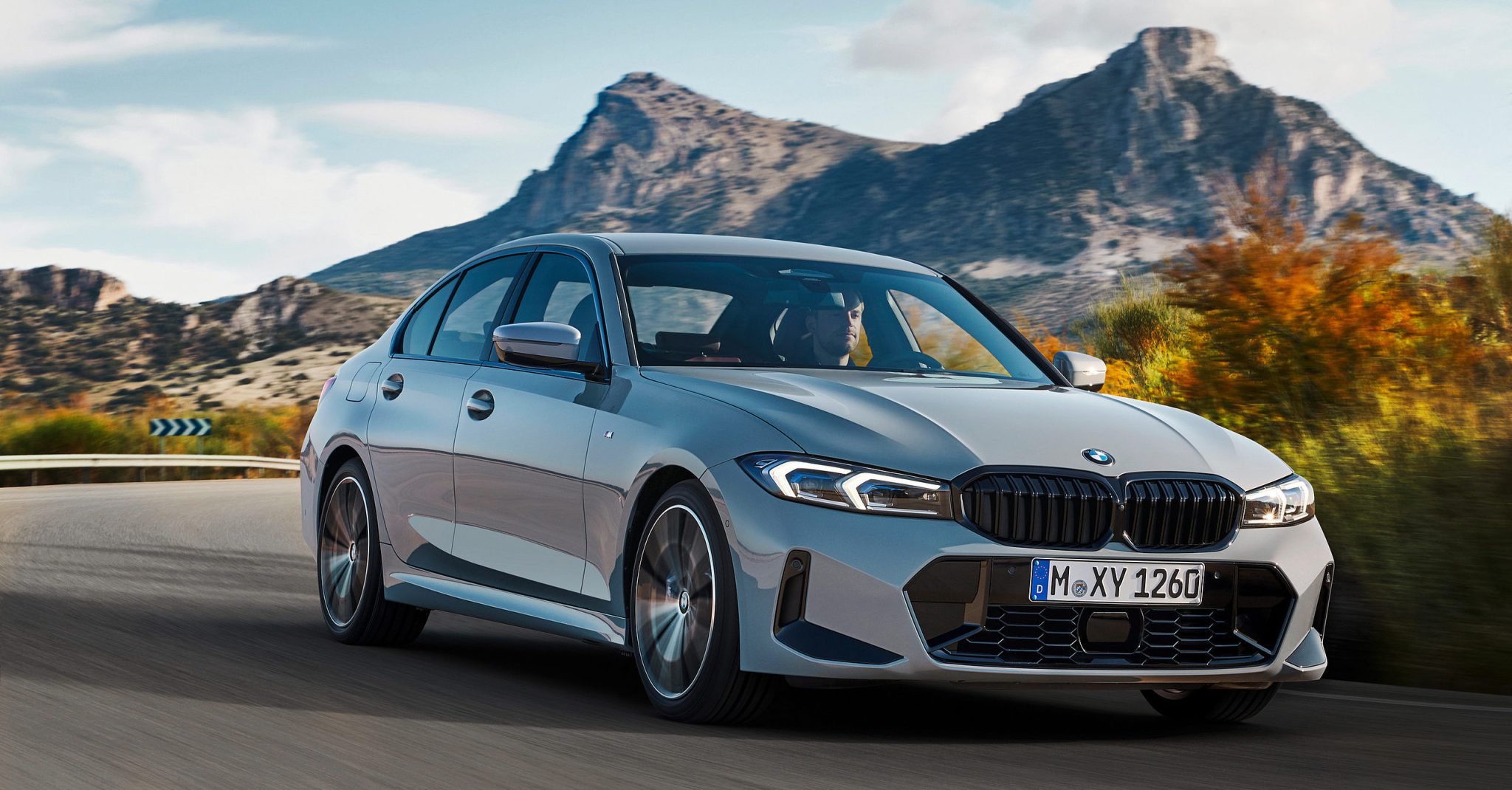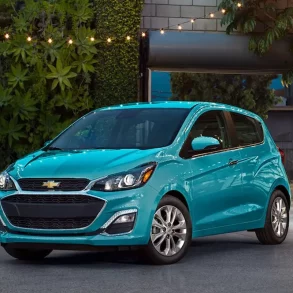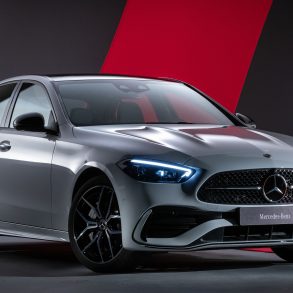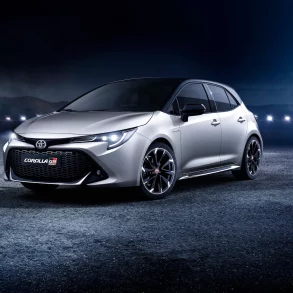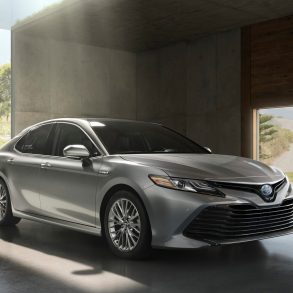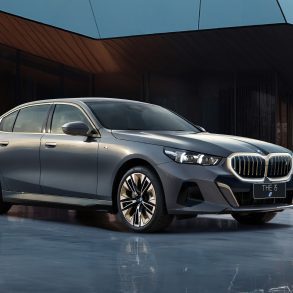The BMW 3-Series
Here you will find monthly and yearly U.S. sales figures for the BMW 3-Series. The BMW 3 Series is an entry-level luxury car manufactured by the German automaker BMW since May 1975. It is an icon. The 3 Series is BMW’s best-selling model, accounting for around 30% of the BMW brand’s annual total sales. The BMW 3 Series has won numerous awards throughout its history, largely due to its balance as an everyday car that has strong performance credentials and luxury to boot. For instance, the 3 Series has been on Car and Driver magazine’s annual Ten Best list 22 times, from 1992 through 2014, making it the longest running entry in the list. As car nuts here at GoodCarBadCar it helps that the M3 is one of our favorite all time cars.
From September 2013 forward through May 2015, BMW USA displayed 4-Series sales in the 3-Series’ total. BMW Canada began reporting 4-Series sales in October 2013. June 2015 marked the first month that BMW USA broke down 3-Series and 4-Series sales.
BMW 3-Series Overview
The BMW 3 Series is a compact executive car that was first introduced in 1975. It is one of the most popular cars in BMW’s lineup and is known for its sporty handling and luxurious interior. The 3 Series is available in sedan, wagon, and Gran Turismo body styles.
The 3 Series is available with a variety of engines, including a 2.0-liter turbocharged four-cylinder, a 3.0-liter turbocharged inline-six, and a 3.0-liter turbocharged inline-six hybrid. The four-cylinder produces 255 horsepower and 295 lb-ft of torque, the inline-six produces 382 horsepower and 369 lb-ft of torque, and the hybrid produces 288 horsepower and 310 lb-ft of torque. The 3 Series is available in both rear-wheel drive and all-wheel drive configurations. It can tow up to 2,000 pounds.
The 3 Series has a sporty interior that can seat up to five passengers. The cabin is trimmed in high-quality materials, including leather, wood, and metal. The 3 Series also comes standard with a variety of features, including a 10.25-inch touchscreen infotainment system, a 12.3-inch digital instrument cluster, and a Harman Kardon sound system. The 3 Series is a performance car that can go from 0 to 60 mph in 5.6 seconds. It has a top speed of 155 mph. The 3 Series is a compact executive car that is priced starting at $41,450.
BMW 3-Series Sales Data & Trends
Motorsports magazine named the BMW 3 Series as the second-most important performance car built during the previous 25 years, but has the marquee stumbled more recently as volume has fallen in the last few years. BMW continues to fumble with designs as it has moved further away from its core so we expect sales to continue to fall over time.
BMW 3-Series U.S. Sales Figures & Charts
U.S Monthly Sales
U.S Annual Sales
| Year | Sales Units |
|---|---|
| 2005 | 106,950 |
| 2006 | 120,180 |
| 2007 | 142,488 |
| 2008 | 112,464 |
| 2009 | 90,060 |
| 2010 | 100,910 |
| 2011 | 94,471 |
| 2012 | 107,705 |
| 2013 | 119,521 |
| 2014 | 141,632 |
| 2015 | 140,609 |
| 2016 | 72,290 |
| 2017 | 59,449 |
| 2018 | 44,578 |
| 2019 | 47,827 |
| 2020 | 39,290 |
| 2021 | 49,458 |
| 2022 | 30,400 |
| 2023 | 33,816 |
| 2024 | 8,412 |
U.S Annual Growth
BMW 3-Series Canada Sales Figures & Charts
Canada Annual Sales
Year Sales Units
2012
11,234
2013
12,507
2014
10,086
2015
9,590
2016
7,452
2017
7,694
2018
6,190
2019
5,908
2020
3,873
2021
4,438
Canada Annual Growth
BMW 3-Series Europe Sales Figures & Charts
Europe Annual Sales
Europe Annual Growth
BMW 3-Series China Sales Figures & Charts
Sales figures for the BMW 3-Series L in China. These statistics exclude sales of the electric version called BMW i3, which are published separately.
China Annual Sales
China Annual Growth
BMW 3-Series Generations
First Generation (E21, 1975-1983)
The BMW 3 Series was introduced in 1975 as the E21 generation. It was available as a two-door sedan and set the foundation for the 3 Series’ success with its sporty handling and driving dynamics. The E21 was BMW’s response to the success of the 2002 model and carried on the tradition of compact luxury cars with a focus on performance.
Second Generation (E30, 1982-1994)
The second-generation BMW 3 Series, known as the E30, debuted in 1982. It offered various body styles, including two-door sedan, four-door sedan, convertible, and estate (wagon). The E30 was praised for its balanced driving characteristics and became a popular choice among enthusiasts. This generation also saw the introduction of the iconic BMW M3, which became a benchmark for high-performance sports sedans.
Third Generation (E36, 1990-2000)
The E36 generation, introduced in 1990, continued to build on the success of its predecessors. It featured a more refined design and improved aerodynamics. The E36 offered a broader range of engine options and introduced more advanced technology, making it more comfortable and practical for daily use.
Fourth Generation (E46, 1997-2006)
The E46 generation, introduced in 1997, further evolved the 3 Series with modern design cues and advanced technology. It was praised for its exceptional handling and driving dynamics, solidifying the 3 Series’ reputation as the benchmark for compact luxury sport sedans.
Fifth Generation (E90/E91/E92/E93, 2005-2013)
The E90 generation, introduced in 2005, marked a significant shift in design and engineering for the 3 Series. It offered a more modern and luxurious interior, along with advanced safety features. The E90 included various body styles, including a four-door sedan (E90), a wagon (E91), a coupe (E92), and a convertible (E93).
Sixth Generation (F30/F31/F34/F80, 2011-2019)
The F30 generation, introduced in 2011, brought further advancements in technology and fuel efficiency. The F30 offered a range of engine options, including turbocharged four-cylinder and six-cylinder engines. It also marked the debut of the BMW 3 Series Gran Turismo (F34), a hatchback-style variant with increased interior space.
Seventh Generation (G20/G21/G28/G80, 2019-present)
The G20 generation, introduced in 2019, is the latest iteration of the BMW 3 Series. It continues to build on the legacy of its predecessors, offering modern design, advanced technology, and a wide range of engine options. The G20 also brought a switch from rear-wheel drive to a front-wheel-drive-based platform for some models to improve interior space and practicality.
From September 2013 forward through May 2015, BMW USA displayed 4-Series sales in the 3-Series’ total. BMW Canada began reporting 4-Series sales in October 2013. June 2015 marked the first month that BMW USA broke down 3-Series and 4-Series sales.

